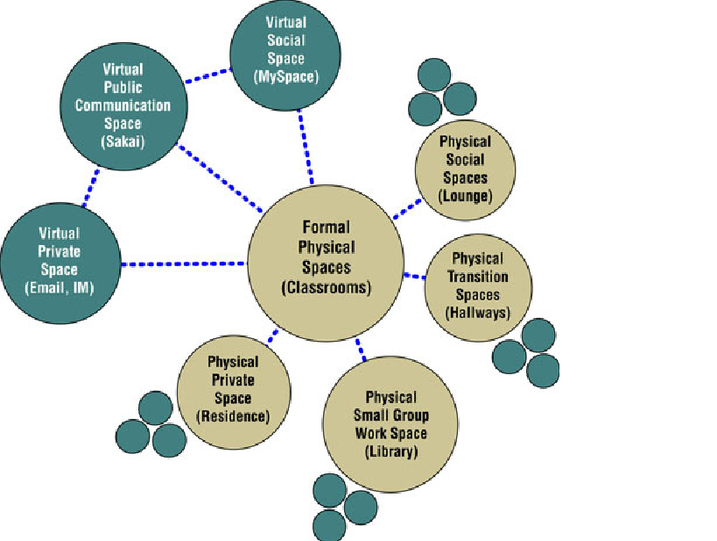The Classroom
Because of shifts in several long-held beliefs about public education and learning, the classroom will be very different. The role of the teacher has become one of mentor, facilitator, and fellow learner rather than the sole provider of information in the classroom. The teacher must be free to both present and maneuver throughout the room interacting with individual students and groups. Another change is that learning is seen as a social activity; no longer done in isolation, but instead, with students interacting and working collaboratively on projects and other authentic learning situations. Technology has an important role in the new classroom. With less emphasis on textbooks and other fixed references, monies are reallocated to technology improvement and maintenance. Consequently, the classroom must look very different.

The classroom can no longer be viewed as being within four walls. The world is the students' classroom. With easy access to the internet and technology and the shifts in those beliefs, the classroom spills out into the hallway and throughout the physical building as well as into the virtual world of the internet. Within the traditional physical space of the classroom, flexibility is imperative. Furniture must be easily moved and reconfigured dependent upon the learning situation. Chairs should have wheels; as should tables to aid in creating the classroom necessary for the day. With chairs that also swivel, various screens mounted on the walls around the classroom will be more readily accessible.
With flip screen computer tables, computers are easily accessible yet able to be put aside for other work.Students will not be facing one another's backs; instead, they will be facing one another in pods or circles. Large screens mounted to walls throughout the classroom will assist in student access in group work. A good portion of the walls will be covered with a writing surface with a generous display area available as well. Classrooms will, of course, be equipped with wireless technology allowing easy access to student laptops; however, hard wiring will also be available for multimedia use. Ample electrical outlets will be available for recharging and other uses. Hallways will contain comfortable furniture to encourage student interaction beyond the classroom and to extend the physical classroom space.
Portable whiteboards will be readily available in the common area. Schools that are built from this time forward will include spaces that are also flexible. One classroom may merge with another by manipulating temporary walls that separate them. More a natural light in common areas and individually controlled, concentrated light designed with projector use in mind will be included in new schools.
Microsoft's Vision of the Future Classroom
Next up, see The Classroom - Outside
